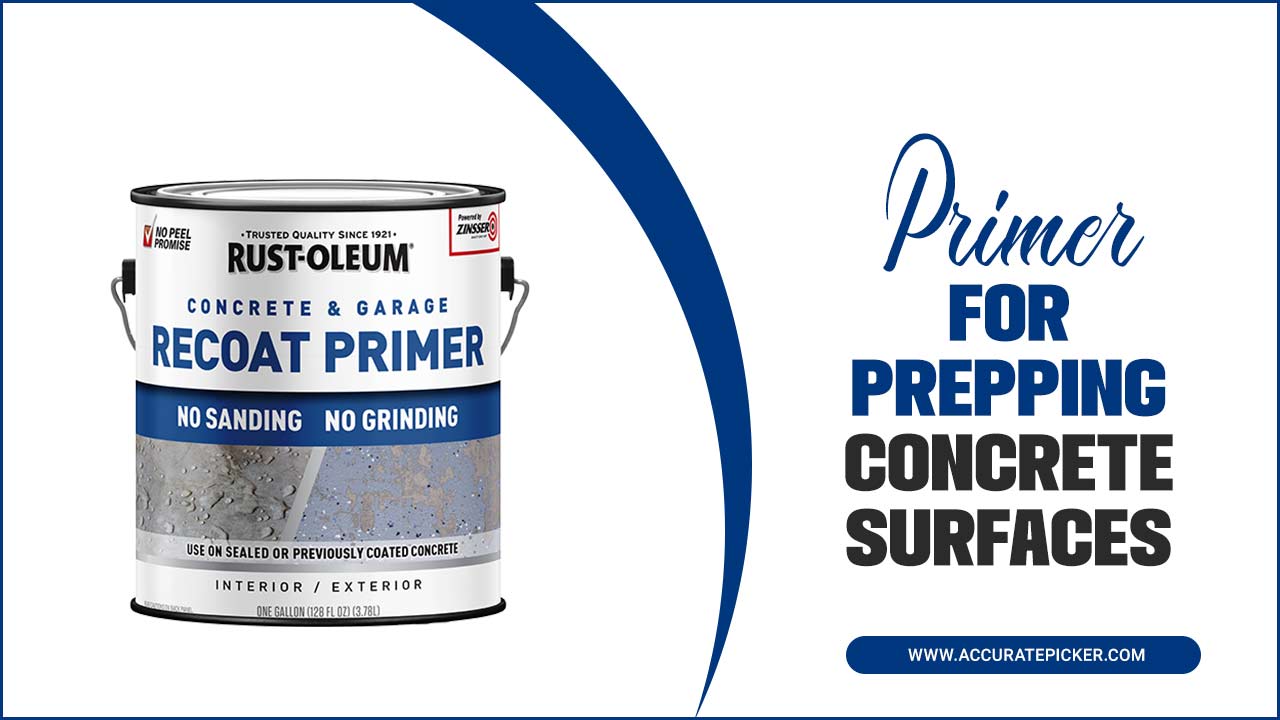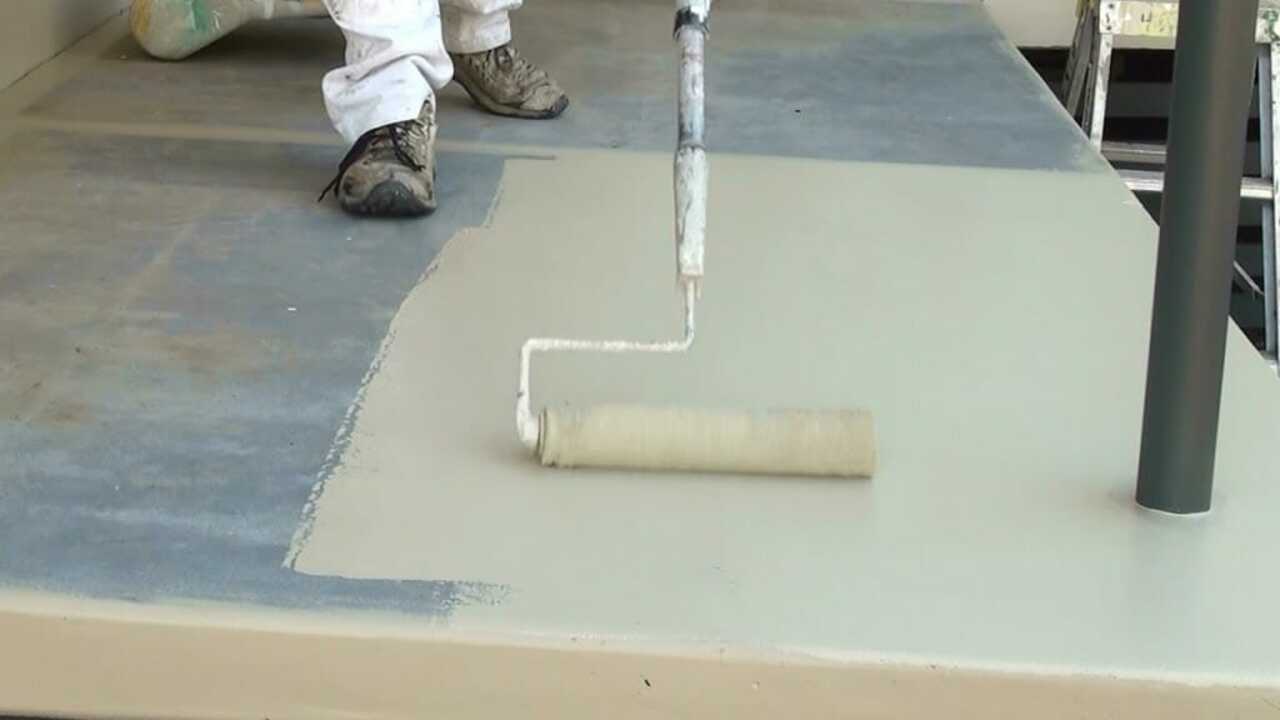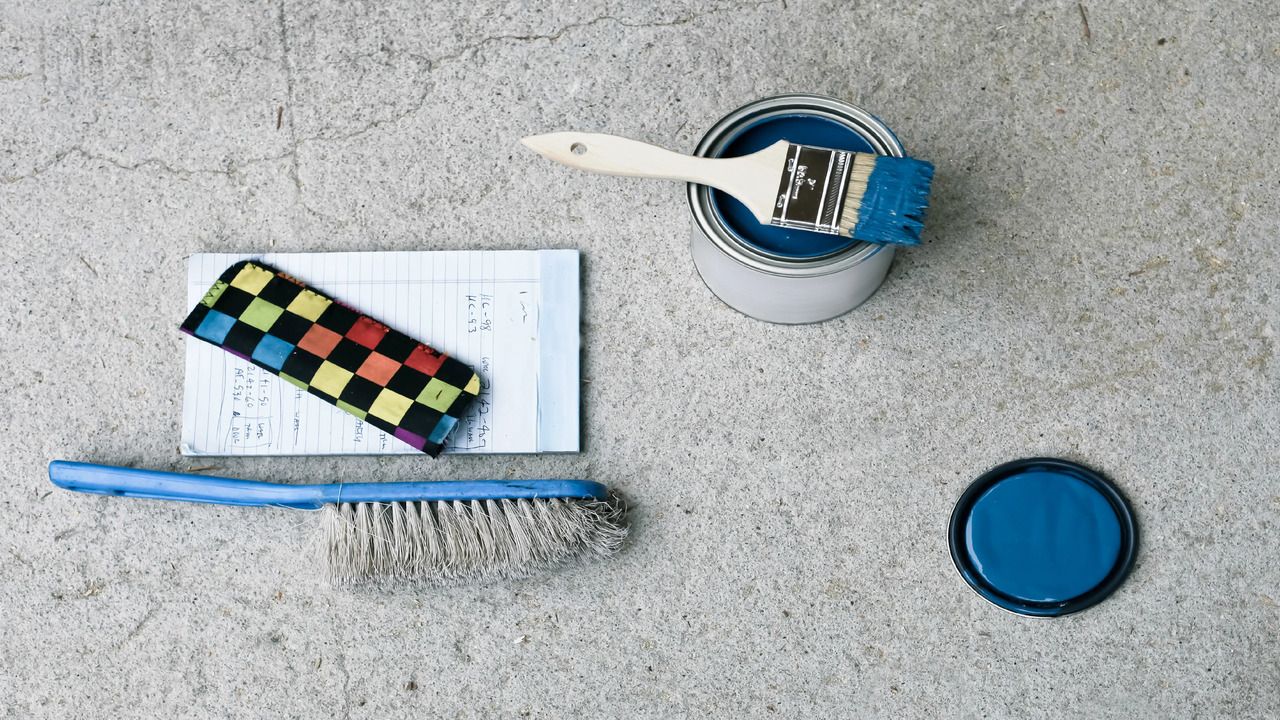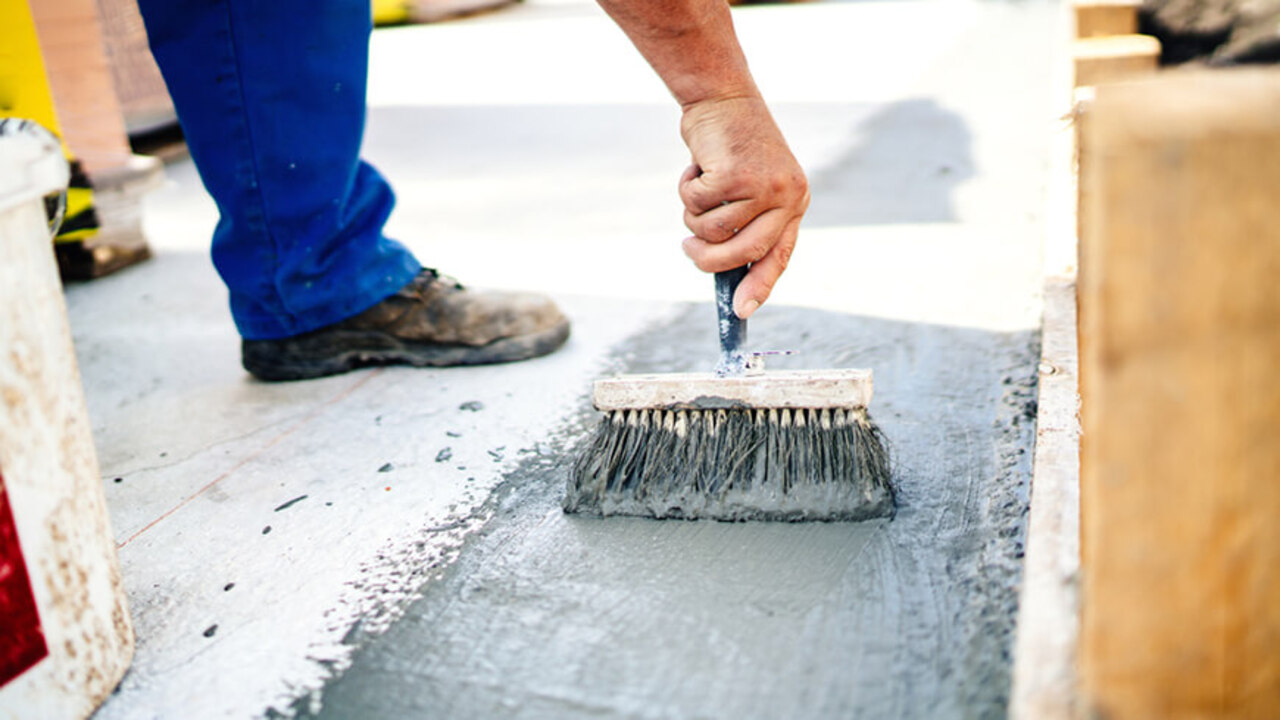Painting concrete surfaces can be a daunting task, but with the right preparation and materials, it can be a straightforward process. A concrete primer is the first step to ensuring a successful paint job.
This article provides a primer for concrete surfaces, discussing the types of primers available, their features, and the steps to properly apply them. With this knowledge, anyone can achieve a professional-looking finish. Read on to learn the basics of priming concrete surfaces for a beautiful, long-lasting paint job.

Preparing Concrete For A Primer

This article provides a primer for concrete surfaces, which are a popular choice for many construction projects. We will explore the basics of concrete, its benefits, and the best practices for working with it.
We will also discuss the different types of concrete, the tools and materials needed, and the steps involved in preparing a concrete surface for painting or other treatments. Finally, we will look at the advantages and disadvantages of using concrete for different applications. With this information, you will be able to make an informed decision about whether concrete is the right choice for your project.
Preparation

Preparing a concrete surface for painting is key to the success of the project. Before you get started, it’s important to ensure the surface is clean and dry. First, use a wire brush or power washer to remove any loose paint or debris.
Then, rinse the area with clean water and allow it to dry completely. Next, use a concrete patching compound to fill any cracks or holes. Finally, use a sander to smooth the surface and remove any rough edges. Once the surface is prepped, you can begin painting.
Cleaning

Cleaning a concrete surface is a key step in preparing it for a new coat of paint or sealer. Before painting or sealing, it is important to ensure that the concrete is free of dirt, grease, and oil. This can be done by using a power washer to remove any grime, followed by scrubbing the surface with a stiff brush and a mild detergent.
Once the surface is clean, rinse it with clean water and allow it to dry completely before beginning any type of painting or sealing. Finally, make sure to apply a concrete primer before beginning any painting or sealing process. With the right preparation, you’ll be able to ensure that your concrete surface is clean and ready for a fresh coat of paint or sealer.
Repairing
Repairing a concrete surface is a relatively simple task. However, it is important to understand that any repair materials used must be specifically designed for use on concrete. The most common repair materials include a concrete patching compound, a concrete filler, and a concrete sealer.
Before beginning the repair process, it is important to ensure that the surface is clean and dry. Depending on the extent of the damage, it may be necessary to use a wire brush or other tools to remove any old material.
Once the surface is clean and dry, the repair materials should be applied in accordance with the manufacturer’s instructions. Depending on the type of repair, additional steps may be necessary to ensure a successful repair. Once the repair is complete, a sealer should be applied to protect the surface from future damage.
Priming
Priming is an essential step in preparing concrete surfaces for paint or other coatings. Primers act as a bonding agent to help the paint adhere to the surface. Primers also help prevent chalking and fading, and can even provide a mildew-resistant finish.
Before priming, it’s important to ensure that the surface is clean and free from dirt, dust, and other debris. If the surface is not properly prepped, the primer may not adhere correctly, leading to peeling and bubbling. Primers come in a variety of formulas, designed to work with specific types of surfaces. For concrete surfaces, an oil- or water-based concrete sealer or primer is recommended.
Applying a primer is easy: simply spread it evenly over the surface with a brush or roller. Allow the primer to dry completely before painting or applying any other coating. With the right primer, your concrete surfaces will be prepped and ready for a long-lasting finish.
Filling
Preparing concrete surfaces for painting or sealing requires several steps, one of which is filling. This will help even out the surface and provide a better base for the paint or sealer. To fill a concrete surface, you will need a good quality concrete filler, a putty knife, and a damp cloth. Start by scooping a generous amount of the filler onto the putty knife and spread it over the area you want to fill.
Using a damp cloth, smooth out the filler until it is even with the concrete surface. Allow the filler to dry before proceeding with the next step. Filling is an important step in ensuring a smooth, even surface before painting or sealing concrete.
Application

Applying a primer to a concrete surface is a straightforward process that requires minimal preparation. Start by cleaning the area thoroughly with a power washer or scrub brush to remove any dust, dirt, oil, grease, or other debris. Once the surface is completely dry, it’s time to apply the primer.
If using a brush, use a high-quality one with synthetic bristles, and be sure to work the primer into all of the cracks and crevices. For a sprayer, it’s important to use a low-pressure sprayer to ensure even coverage.
Finally, allow the primer to dry for at least an hour before applying any additional coats. Depending on the type of primer and the desired results, additional coats may be necessary. Once the desired number of coats have been applied, the concrete surface is ready for whatever finish is desired.
Mixing
Mixing concrete is an essential part of any concrete project. The process of mixing involves combining the concrete ingredients – cement, aggregate, and water – in a concrete mixer until a uniform mix is achieved.
It is important to ensure that the mix is of the right consistency and is thoroughly mixed to ensure the strength and durability of the finished concrete surface. To mix concrete correctly, it is important to follow the manufacturer’s instructions closely.
This includes the amount of water to be added and the correct mixing time. Additionally, it is important to use the appropriate mixing tools, such as a concrete mixer, to ensure a uniform mix and a successful concrete project.
Coating
Coating concrete surfaces is an important step to ensuring a strong, long-lasting finish. Primer is an essential part of this process, as it prepares the surface for the final coating. Primers create a protective barrier that prevents moisture and other contaminants from seeping into the concrete, while also providing a good base for the final coating to adhere to. Primers come in a variety of forms, such as water-based, oil-based, and epoxy.
Water-based primers are the most common and are a great choice for most concrete surfaces, while oil-based primers are better for areas with high moisture levels. Epoxy primers are the most durable and are best for extreme weather conditions. No matter which primer you choose, it’s important to ensure a thorough application to ensure the best results.
Drying
Once the primer is applied, it is paramount the area is left to dry. Depending on the type of primer used, drying times may vary. Generally, a minimum of 24 to 48 hours of drying time is recommended to ensure the primer sets and the concrete surface is properly prepared for painting.
It is important to check the instructions on the product packaging to ensure the correct drying time is observed, as this will help to ensure a successful paint job.
Additionally, the temperature and humidity levels of the area should be taken into consideration, as this can affect drying time. For example, lower temperatures and higher humidities will require a longer drying time, while higher temperatures and lower humidities will require a shorter drying time.
Conclusion
This article provides an overview of the steps needed to properly prepare a concrete surface for painting. It covers the importance of cleaning and repairing any damage, filling cracks and holes, and using a primer to ensure a lasting finish. It also explains the different types of primers available and how to select the right one for the job. Finally, it offers tips for successful application and maintenance of the primer.
FAQ’s
1.What Are The Best Methods For Preparing A Concrete Surface For Priming?
Ans: The best methods for preparing a concrete surface for priming are to clean the surface, removing all dirt, dust, and loose material; to repair any cracks; to roughen the surface with a wire brush; and to etch the surface with an acid solution. Doing these steps will ensure that the primer will bond properly to the concrete.
2.What Types Of Primers Are Available For Concrete Surfaces?
Ans: There are several types of primers available for concrete surfaces, including epoxy primers, acrylic primers, polyurethane primers, and polyaspartic primers. Epoxy primers are the most common, as they are highly durable and provide a strong bond for topcoats.
Acrylic primers are also popular, as they are less expensive than epoxy but are still highly effective. Polyurethane and polyaspartic primers provide additional protection and are used for surfaces that require extra protection.
3.What Factors Should Be Considered When Selecting The Right Primer For A Concrete Surface?
Ans: When selecting the right primer for a concrete surface, several factors should be taken into consideration. First, the expected environment should be evaluated to determine if the primer should be water- or oil-based.
Additionally, one should determine if the primer needs to be breathable or impermeable, and if it should be stain-resistant or not. Finally, the type of topcoat that will be applied should be taken into account when selecting the right primer for a concrete surface.
4.What Is The Best Way To Apply Primer To A Concrete Surface?
Ans: The best way to apply primer to a concrete surface is to prepare the surface by removing any dirt, grease, or other contaminants. Then, use a high-quality concrete primer and apply it in thin, even layers with a paint roller or brush. Allow the primer to dry completely before applying the second coat. Finally, apply a sealer to protect the primer and ensure a longer lasting finish.
5.What Are The Advantages Of Priming A Concrete Surface?
Ans: Priming a concrete surface has several advantages. Primers form a bond between the concrete and the topcoat, making the topcoat more durable and less likely to chip or peel. Primers also help to even out the surface, creating a smoother and more professional looking finish.
Primers also provide an extra layer of protection against water and other liquids, helping to prevent them from seeping through to the concrete. Finally, primers can help to reduce the amount of paint required to achieve a complete coverage, saving time and money.





